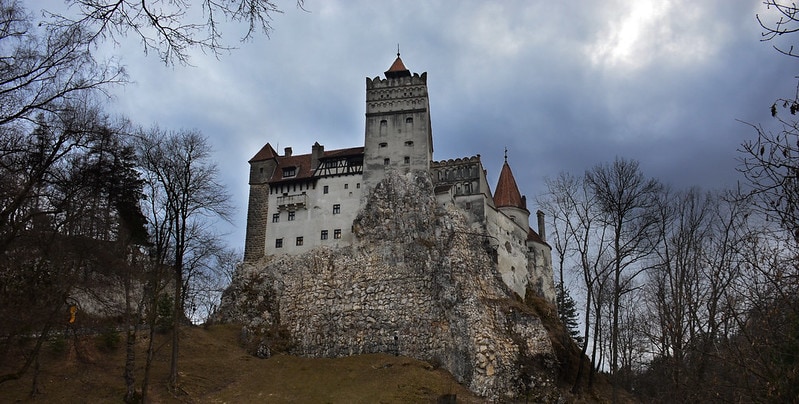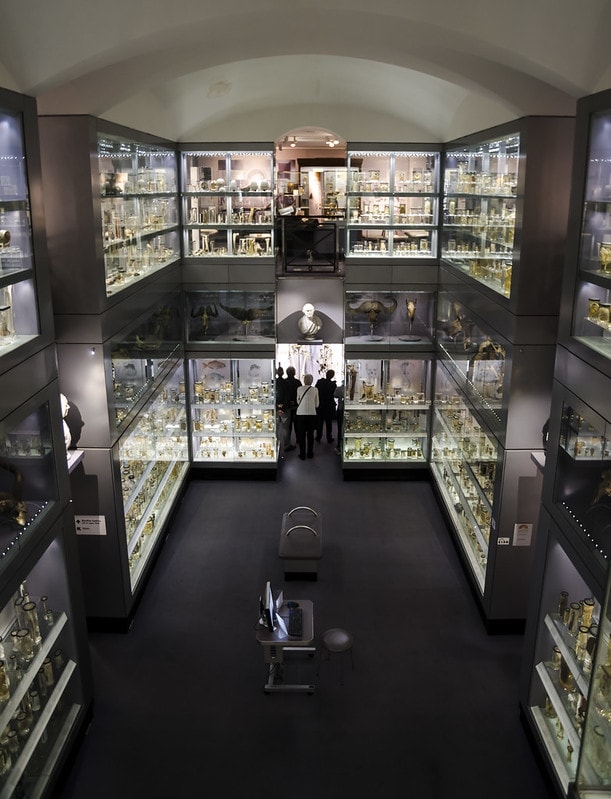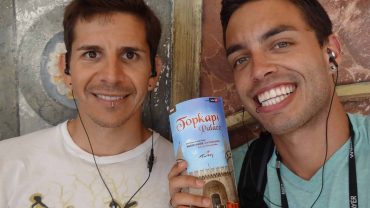Horror is for life, not just for Halloween. From the other-worldly castles of Transylvania to the gruesome museums of London, the world is full of places catering to those with a taste for the macabre. However, four spooky destinations really stand out as worthy visits on a holiday any time of the year. All of which are sure to send a chill down even the most intrepid explorer’s spine.

Bran Castle – Transylvania (Romania)
It comes as a surprise to many, but the infamous Transylvania of Bram Stoker’s Dracula is in fact a real place. Transylvania – which creepily translates as ‘across the woods’ – is just 30 km from Bucharest in Romania. The region is famous for remote medieval towns, looming mountainous ranges and – of course – creepy Gothic castles. The most famous of which being Bran Castle itself – the inspiration for Dracula’s castle.
The ancient Gothic fortress is an impressively creepy visage resting upon a rocky outcropping, overlooking the village of Bran with the humbling backdrop of the peaks of the Bucegi behind it. Now owned by an archduke, it is open to the public to explore its many courtyards, rooms and corridors – including a mandatory secret passage behind a bookcase. Furthermore, what was once a well shaft in its heart has been transformed into ‘The Time Tunnel’ – a multimedia experience elevator that projects the dark history of the castle as it descends.
Fortunately – or unfortunately, depending on your perspective – you can’t spend the night in the castle itself, but the village Bran has comfortable accommodations available. Due to an influx in tourism the village has become especially welcoming to all – including the LGBTQ+ community. An alternative place to stay is the nearby scenic town of Brasov – which has its own gothic black church juxtaposed with the colorful baroque buildings beside it. The town even has its own gay community with drag shows not uncommon and boasts other attractions like Rope Street (one of the narrowest streets in the world) and its Brasov Hollywood sign.

Aokigahara Forest – Fujikawaguchiko (Japan)
Japanese culture can seem somewhat alien to westerners at times, but true horror is international. There are many unearthly sights to be seen around Japan, but Aokigahara Forest is perhaps the most famous. The dense forest reached international fame when it inspired a film – simply called The Forest – starring Natalie Dormer of Game of Thrones fame and has since become the favored spot of many a “dark tourist”.
Aokigahara Forest is found near Fuikawaguchiko – a Japanese resort town under the northern foothills of Moun Fuji by Lake Kawaguchi – and has earned the rather morose nickname of “the suicide forest” due to the number of suicides that have happened there over the years. It is also rumoured to be home to the ‘Yurel’ – the Japanese name for ghosts who have died under violent circumstances, such as murder or suicide. Aokigahara Forest is also both mind-blowingly beautiful and eerily serene, with the dense trees and lava rock floor absorbing all sound, blanketing the forest in an uneasy silence. Visitors should stay in the aforementioned Fujikawaguchiko and consider taking a guided tour to avoid getting lost. It’s worth noting that Japan is gay-friendly, but open displays of affection are frowned upon.

Hunterian Museum – London (UK)
London is a city with a long and grisly history. There’s Jack the Ripper, the black plague, beheadings and a lot of torture– all of which has museums dedicated to them around the city. However, hidden away just a short walk from Holborn tube station, is a museum that conjures up a more scientistic, Frankenstein-like horror.
The Hunterian Museum is named after the father of scientific surgery, John Hunter. It is – at its surface – a place of learning, but let’s be real: surgery is a gruesome business. Within the museum walls are six floors of oddities. However, its main draw is the seemingly endless rows of glass cabinets. Each packed full of jars showcasing anatomical specimens of everything from fetuses to human body parts – best not to ask which ones – to every animal you can imagine, preserved at any stage of life. Besides the gruesome spectacle, you can also see a grisly collection of surgeons’ tools and various preserved skeletons, such as that of an Irish “giant” and a two-headed cow.

Island of the Dolls – Xochimilco (Mexico)
Dolls are right up there with clowns and spiders when it comes to inducing a primal fear in your average person, and in Mexico there’s a whole island covered in them. Just 30km south of Mexico City (a city with a vibrant gay scene) in the borough of Xochimilco you can board a colorful gondola-style boat and sail down one of the area's many branching canals to the creepy island.
The Island of Dolls – as the name suggests – is home to the largest collection of dolls in the world, with hundreds of dolls of all shapes and sizes hung and strung from trees and the island’s four wooden huts. The story goes that the island’s former owner, Don Julián Santana Barrera, found the body of a girl floating in the canal beside the island. The next day he found a doll in the same place and – assuming it was the girl’s – hung it up on the island in her memory. From that day he started hearing voices and began to hang more dolls up around the island to appease what he believed to be evil spirits tormenting him. This continued for fifty years until one day his nephew found Barrera lying face down in the canal, in the very spot where he found the young girl all those years before.
Since his death in 2001, the island has been opened to the public to explore at only 50 pesos, including entrance to a small museum detailing the island’s graphic history. The island is not for the faint of hearts as guests have reported seeing dolls moving, opening their eyes and whispering to each other… but hey, a little scare never killed anyone, right?




Comment (0)